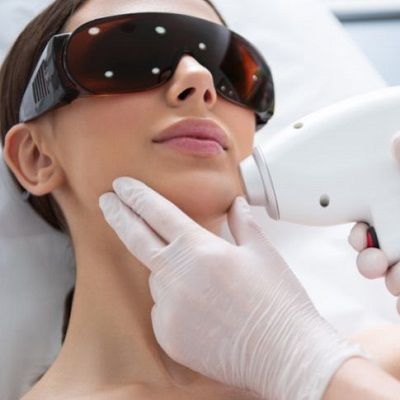Introduction
Embarking on the journey of full body laser hair removal is a significant decision, one that promises long-term benefits such as smooth, hair-free skin and a reduction in the hassle of frequent shaving or waxing. However, achieving optimal results and minimizing risks require thorough preparation, starting with a pre-treatment consultation. This initial meeting between the patient and the clinician is crucial for setting realistic expectations, addressing individual needs, and ensuring that the treatment plan is tailored to the patient’s specific requirements. This article delves into the essential topics that should be covered during a pre-treatment consultation for Full Body Laser Hair Removal Oman, ensuring that patients are well-informed and ready for the procedure.

1. Understanding the Procedure
The consultation should begin with a comprehensive explanation of the laser hair removal process. Patients need to understand how the technology works, including the principles behind laser hair removal—using concentrated light to target and destroy hair follicles. Discussing the various types of lasers used (e.g., Alexandrite, Diode, Nd
) and how they differ in terms of effectiveness and suitability for different skin and hair types is crucial. This segment helps demystify the treatment and sets realistic expectations for what can be achieved.
2. Assessing Skin and Hair Type
A key component of the consultation is a detailed assessment of the patient’s skin and hair types. Laser hair removal is most effective on individuals with light skin and dark hair due to the contrast, but advancements in technology have improved outcomes for a wider range of skin tones and hair colors. The clinician should examine the patient’s hair color, thickness, and density, as well as their skin type and any pre-existing conditions such as hyperpigmentation or sensitivity. This assessment helps in selecting the appropriate laser and adjusting settings to optimize results.
3. Discussing Medical History
Patients must provide a thorough medical history, including any past or current medical conditions, medications, or treatments that could affect the procedure. This includes conditions like diabetes, autoimmune disorders, or skin issues, as well as medications that may influence skin sensitivity or healing. For example, certain medications can make the skin more sensitive or increase the risk of side effects. An accurate medical history ensures that the treatment plan is safe and effective, minimizing potential complications.
4. Setting Expectations and Goals
Discussing expected outcomes and setting realistic goals is vital for patient satisfaction. The clinician should explain that multiple sessions are typically required to achieve permanent hair reduction, as hair grows in different cycles. Patients should be informed about the typical number of sessions needed for full body treatment and the intervals between them. Understanding that results may vary based on individual factors helps manage expectations and enhances satisfaction with the treatment.
5. Pre-Treatment Instructions
Pre-treatment care is an important aspect of the consultation. Patients should be advised on how to prepare their skin before the procedure, including avoiding sun exposure, discontinuing certain skincare products, and refraining from plucking or waxing. The clinician may also provide guidelines for shaving the treatment areas to ensure that the laser targets the hair follicles effectively. Proper preparation can significantly impact the safety and efficacy of the treatment.
6. Addressing Potential Risks and Side Effects
Laser hair removal, while generally safe, does carry some risks and potential side effects. During the consultation, the clinician should discuss common side effects such as redness, swelling, or temporary pigment changes. More rare but serious risks, such as scarring or changes in skin texture, should also be covered. Understanding these risks allows patients to make informed decisions and prepares them for any post-treatment care that may be necessary.
7. Cost and Payment Options
The consultation should also cover the financial aspects of the treatment. Patients need to be informed about the cost of full body laser hair removal, which can vary based on the clinic, the type of laser used, and the number of sessions required. Additionally, discussing payment options, financing plans, and whether the procedure is covered by insurance helps patients make financially informed decisions.
8. Aftercare and Maintenance
Finally, a detailed discussion of post-treatment care is essential. Patients should be aware of how to care for their skin after each session, including avoiding sun exposure, using gentle skincare products, and following any specific instructions provided by the clinician. Additionally, maintenance treatments may be necessary to manage any residual hair growth, and understanding this can help patients plan for long-term care.
Conclusion
A pre-treatment consultation for full body laser hair removal is a crucial step in ensuring a successful and satisfactory experience. By thoroughly discussing the procedure, assessing individual factors, setting realistic expectations, and addressing risks, patients can make informed decisions and prepare for the treatment effectively. This comprehensive approach not only enhances the safety and efficacy of the procedure but also helps build a strong patient-clinician relationship based on trust and clear communication. With the right preparation and information, patients can look forward to achieving their desired results with confidence and peace of mind.
